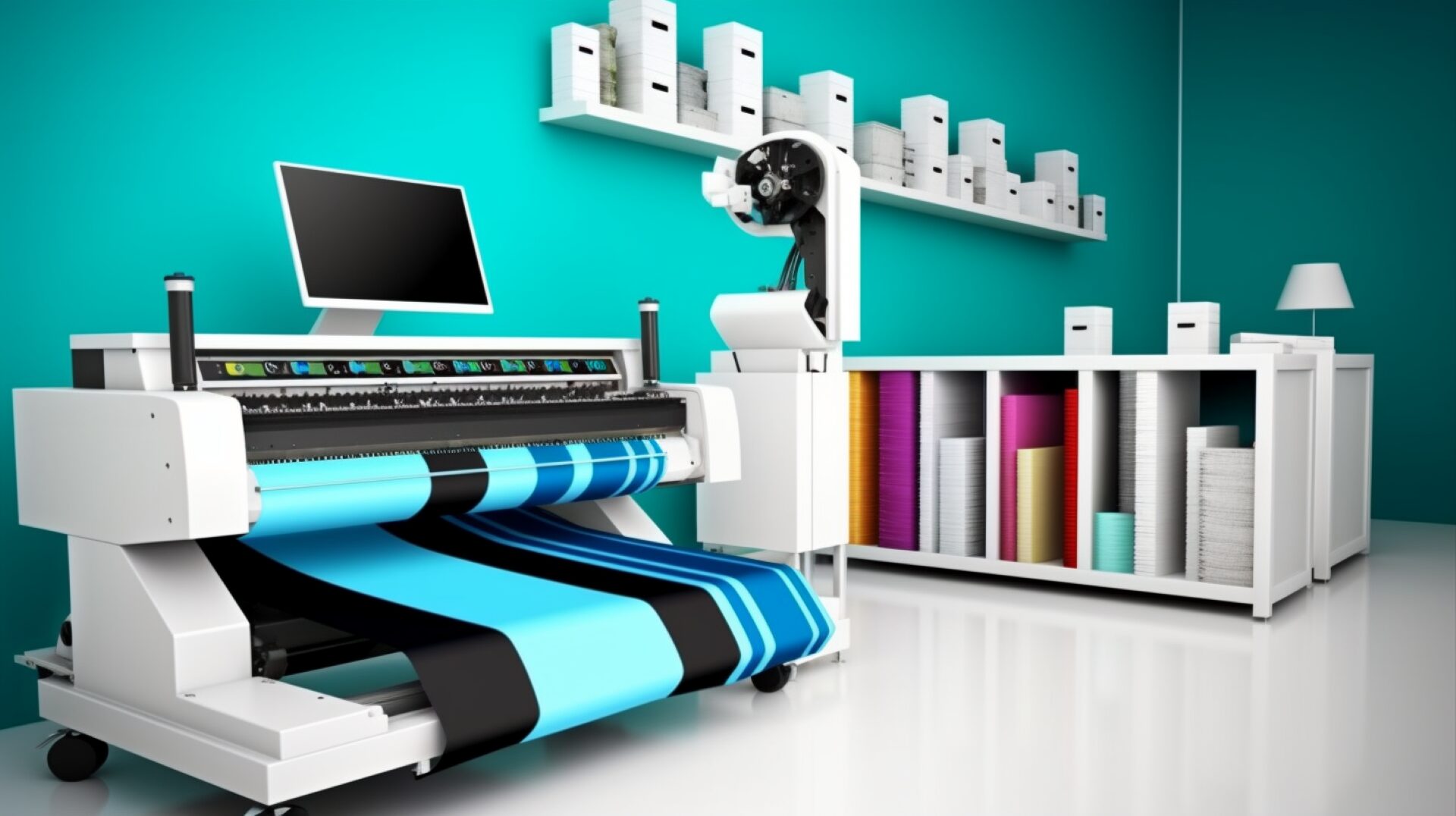
Are you considering doing a project for a client with specific requirements or looking to diversify your portfolio? Try adding vinyl printing to your repertoire. It’s a widely used printing technique that can give your creative work depth and improve quality. It has many applications in graphic design, business and other personal projects.
What is Vinyl Printing?
Vinyl printing is the process of transferring images, text or designs on coated vinyl material. The special coating on the vinyl allows for high-resolution printing and has many applications.
Printing on whole rolls of vinyl is possible for large-scale projects. It is typically used for wrapping vehicles, walls and other objects for promotional purposes. Vinyl rolls can come in many sizes and lengths to accommodate various project sizes.
Special printers and cutters can yield different designs, shapes, and print quality for specific projects. There are also special types like reflective, transparent and frosted film with unique printing applications.
Vinyl printing is a viable option for personal and commercial projects at any scale. It’s a cost-effective way to advertise and promote products or services. Some examples of vinyl prints include billboards, posters, banners and even shirt prints.
This is especially true for graphic designers looking to venture into printing their designs, typography and artwork or for printers who want to diversify their business services.
Pros of Vinyl Printing
Vinyl prints are used in traditional marketing materials like billboards, posters and signages. They can grab attention and increase brand awareness to supplement a marketing campaign. Here are some advantages of vinyl printing that make it a good choice for creative projects:
Long-lasting prints
High-quality vinyl is hard to beat simply because it is durable. This is why vinyl printing is the go-to for many marketing materials like posters, wraps and signages. Vinyl is waterproof, scratch-resistant, and highly tolerant for hot, cold and wet conditions.
And since vinyl typically has an adhesive backing, it can adhere well to smooth, textured and uneven surfaces. Printers also laminate vinyl to retain the quality of the print and make it last longer.
Cost-effective printing
Some vinyl and printing combinations can yield considerable savings in the long run. Solvent ink printers offer an affordable alternative to other printing options due to their relatively lower ink cost.
Printers working on a large-scale project can benefit from this cost reduction. Some large-scale projects only require low-resolution printing since they’ll be placed far away. These projects include billboards, large posters and building wraps.
High-quality and resolution
This is one of the strongest qualities of vinyl printing. High-quality vinyl and printers can yield professional prints with vivid colors, crisp details and remarkable texture. These are typically used in high-end projects to showcase a product’s quality or a brand’s luxurious appeal to consumers.
Some clients have high expectations for printed promotional materials, so printers use high-quality vinyl printing for their projects.
Many creative applications
While digital advertising is prevalent in today’s modern age, there’s still an argument to be made about traditional methods. A marketing campaign can increase its effectiveness by 400% using a combination of print and digital ads.
Vinyl can be used on virtually any surface as long as the adhesive will stick, making it an excellent option for printed promotional materials. Some of its applications include:
- Vehicle wraps — Mobile advertising creates brand awareness and recognition among commuters in transit.
- Window wraps — A standard advertising and marketing tactic for restaurants, shopping centers, boutiques, etc.
- Posters — Product placement and service promotions benefit from this marketing material.
- Photo prints — High-resolution prints can make images pop out for better name recall.
- Banners — Large prints in strategic locations like ingress and egress points increase brand visibility.
- Signages — A well-placed signage with attention-grabbing visuals is an effective advertising strategy.
- Floor prints or ads — Floor space and locations with high foot traffic are great places for ads. Vinyl prints are also suitable for directions in public spaces.
- Reflective signs — Reflective vinyl can improve public safety during low-light conditions.
- Shirt prints — Vinyl printing can also be used to sell merchandise. There’s a niche market for customized graphic tees and other printable apparel.
Wide range of materials to work with
There are different types of vinyl used for traditional advertising printing projects. These materials have various applications and reputable vinyl printers typically stock them to cater to many client requirements. Vinyl materials used for printing include:
- Reflective — Unique reflective film with low-light uses.
- Metallic — Can be used for various interior decoration projects. Metallic foil adds a striking look to a space or surface.
- Glossy — Typically used in photo printing due to its mirror-like sheen.
- Matte — Widely used in posters with mixed images, texts and designs.
- Textured — Can be used with printing painting-like images for a richer look.
- Transparent or translucent — Used for windows and other glass surfaces. Some allow one-way vision for privacy.
- Frosted — Creates a smoky effect on glass surfaces and maintains privacy.
Cons of Vinyl Printing
Like other printing materials out there, vinyl is far from perfect. It has weaknesses you need to consider if you’re working on a project for a client. Here are some limitations of vinyl printing:
Heavy and hard to transport
This is especially true for large-format prints like banners, wraps, billboards and signages. Vinyl is heavier compared to other printing materials like fabric or laminated paper.
Prints can stretch or crack
Vinyl is durable and can last between 5-10 years. As the material ages, it also deteriorates. Vinyl prints on shirts can stretch and crack with repeated washing and extended exposure to UV rays.
Vinyl prints on shirts can also have a heavy hand feel when worn. The plastic nature of vinyl also means it can get hot when it touches the skin for prolonged periods.
Can be too reflective
Glossy vinyl’s strength can also be considered a weakness for photo prints. Due to its mirror-like sheen, vinyl can reflect light and affect the visibility of the print under bright lights. The reflection can distract motorists, so printers must be careful when using vinyl for large-format projects like billboards.
Printers Used for Vinyl Printing
There are various types of printers applicable for vinyl projects. These have their distinct uses and advantages that printers should be aware of. These printers include:
- Solvent ink printers — An economical choice but offers limited resolution required for photo prints.
- Eco-solvent printers — This printer can produce high-resolution images with remarkable quality but can be more expensive.
- UV printers — Produces high-quality prints on different media like paper, uncoated plastic, cloth and even leather.
There’s a Vinyl Print for Every Project
Whether you’re working on large-format prints like billboards or trying your hand at small-batch shirt printing, there’s a vinyl and printer combo that’s right for you. Vinyl printing’s creative applications are far-reaching and its advantages are difficult to ignore — especially from a business perspective.
Identify your client’s needs and your capabilities to maximize vinyl’s creative potential. With research and practice, you can create vinyl projects featuring your own designs in no time.




Leave a Comment